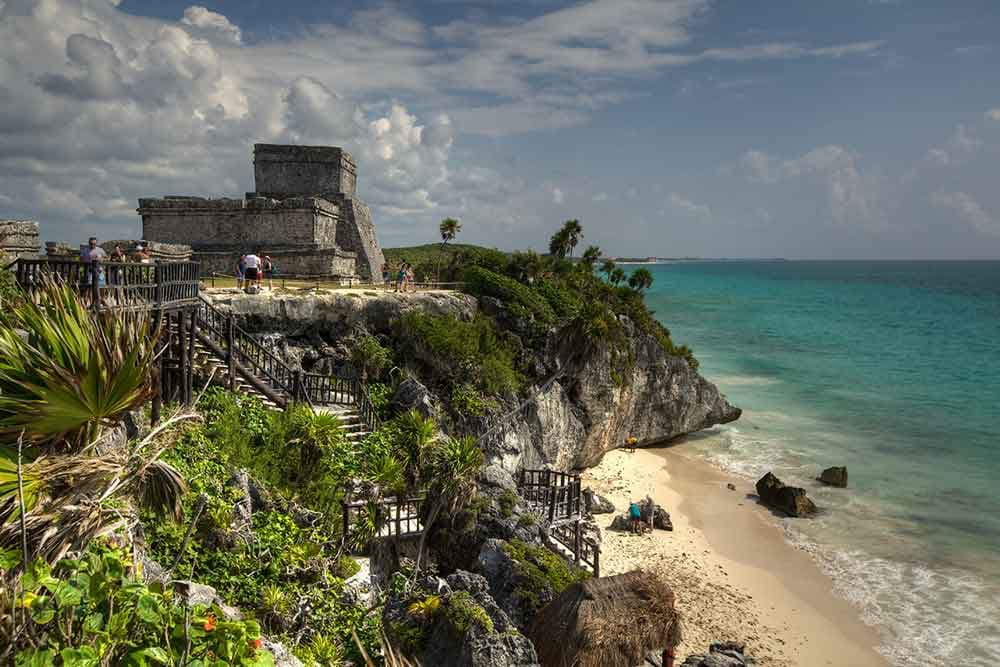 Tulum, Quintana Roo | Photo credit: Journey Mexico
Tulum, Quintana Roo | Photo credit: Journey Mexico
Use authorized taxis
Take only authorized taxis – “Taxis Autorisados.” They cost more, but their registered numbers can be traced. Don’t get antsy and opt for an unauthorized taxi. You may get taken for a ride – literally.
Bring a map
When driving to a destination, Lenczyner recommends that you “make sure you have a map – and make sure you’ll have cell service throughout [your trip].”
Be beach- and water-smart too
Not all beaches have signs clearly stating the dangers of strong currents, riptides, and heavy waves. Get the scoop on water safety in Mexico from your travel professional or tour guide, the local tourism board, or online resources.
Be careful driving
While driving in Mexico is not quite as sketchy a proposition as it is in some Latin American countries, dangers still abound, especially if you waver from the toll roads.
If you do get into an accident on a major highway in Mexico, dial 078. This will connect you with the Green Angels, a fleet of trucks with bilingual crews.
No matter what road you’re on in Mexico, avoid driving at night.
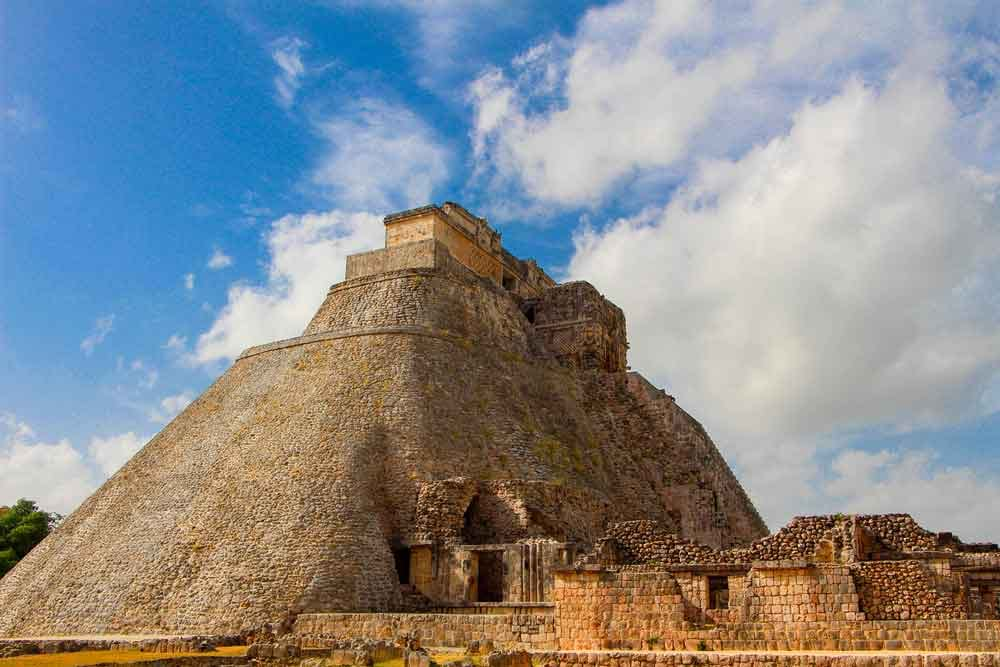 Uxmal, Yucatan | Photo credit: Journey Mexico
Uxmal, Yucatan | Photo credit: Journey Mexico
MEXICO SAFE-TRAVEL TIPS FROM THE STATE DEPARTMENT
The State Department official speaking on background added these tips, from the page on travel.state.gov that has safety recommendations on travel to Mexico:
In addition, the State Department reminds travelers to:
- Pack lightly and bring appropriate clothing.
- Be aware of the effects of:
- Different food
- A new climate
- More strenuous physical activity
- Changes in routine and schedule
- Apply for a passport at least three months before you travel. If you have one, check the passport’s expiration date and entry requirements for Mexico.
- Work with the nearest consulate or embassy if you have problems. They can help you:
- Contact relatives or friends
- Find medical care
- Report a crime
- Find accommodation and arrange flights home
- Replace a stolen or lost passport
 Luxury Casa Koko, Punta Mita | Photo credit: Journey Mexico
Luxury Casa Koko, Punta Mita | Photo credit: Journey Mexico
Medical issues: Look for approved providers and hospitals
If you get sick or are injured while on a Mexican vacation, note that there have been cases of medical billing abuses. Make sure your provider is on the State Department’s list of approved providers and hospitals.
Most Mexican hospitals don’t accept U.S. domestic health insurance or Medicare/Medicaid and require payment upfront by cash, credit card, debit card, or bank transfer.
While most U.S. medical plans aren’t accepted in Mexico, travel health insurance from a company like Berkshire Hathaway Travel Protection is – one more reason why travel medical insurance is a must-have on any Mexican vacation.
Contact your travel insurer as soon as a situation arises; they’ll work with you and providers to coordinate care and payment.
 Hacienda, Chekul | Photo credit: Journey Mexico
Hacienda, Chekul | Photo credit: Journey Mexico
Weather: Hurricanes are very rare, yet make travel cheaper
Generally, weather on the Mexican coasts is ideal – sunny and warm, with gentle breezes custom-made for lazing by the beach.
However, from June through November there’s a risk of tropical storms. Hurricanes and tropical depressions can hit Mexico’s Caribbean, Gulf, and Pacific coasts, disrupting flights and cruises in addition to resort stays.
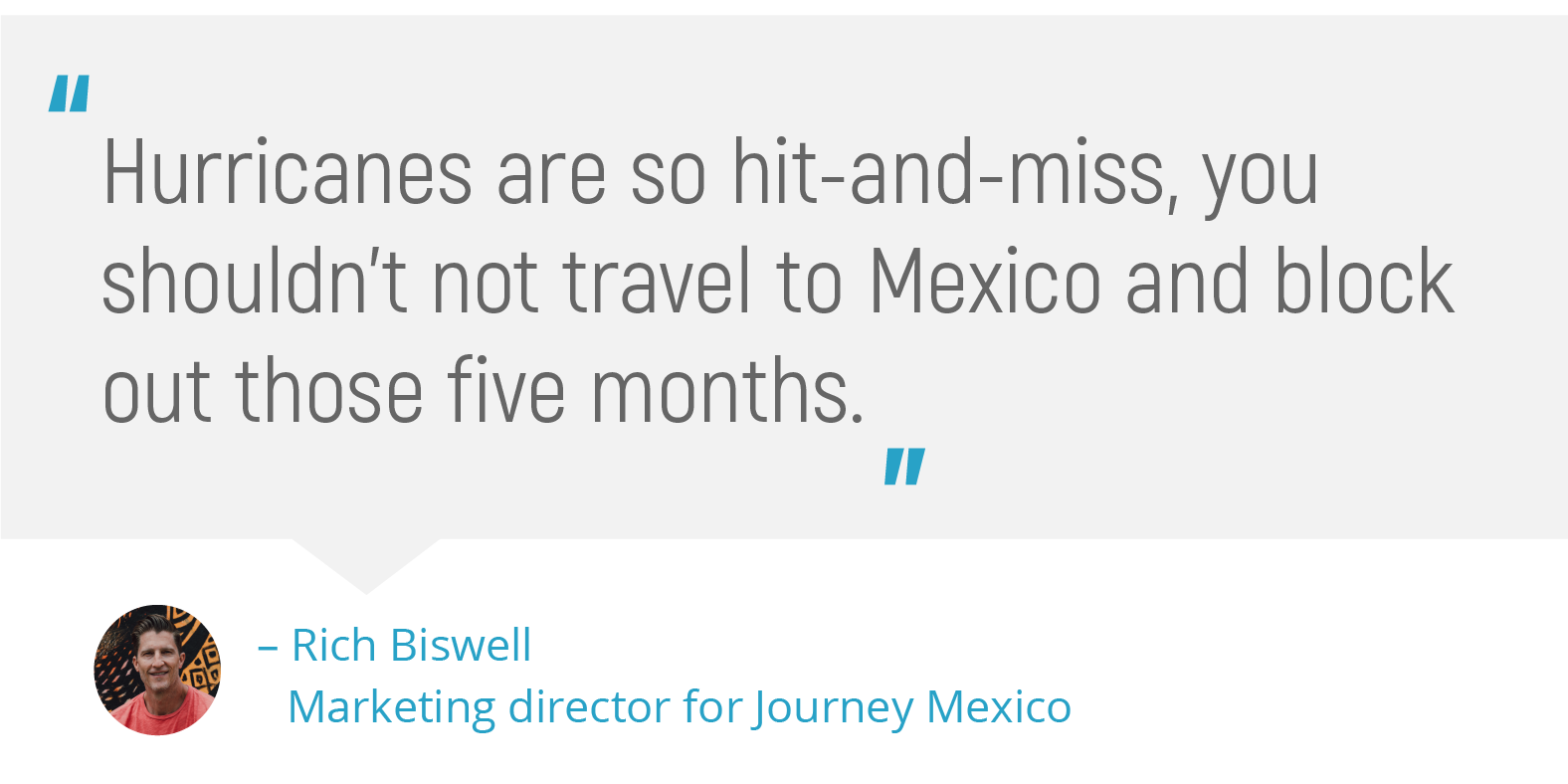
If you travel to Mexico during these months, check the long-term forecast. On the other hand, as Biswell said, “Hurricanes are so hit-and-miss, you shouldn’t not travel to Mexico and block out those five months.”
Furthermore, according to Lanczyner, “Every single one of our structures are required by law to have a shelter, so I would not hesitate to travel to Mexico during hurricane season.”
And here’s a bonus: Travel to Mexico can be cheaper during these times, so you could get a lot for your money if you’re willing to take a calculated risk.
Mi casa es su casa: Mexico’s vested interest in keeping you safe
“Even with the continuous negative press about Mexico, tourism has continued to grow and grow and grow and grow,” Biswell said. “That speaks a lot for the destination, for travelers, and for the people of this amazing country.”
Around 20 million Americans vacation in Mexico every year, so everyone has a vested interest in making travel to Mexico fun, exciting, memorable, and above all safe.
“There are 9.5 million people in Mexico employed in the tourism industry,” Lanczyner said. “That means 9.5 million families depend on you having a wonderful time in Mexico – and we take it personally. We say – and we believe – that ‘Mi casa es su casa’ – our house is your house.”
And it’s a house that’s safe … and getting safer.
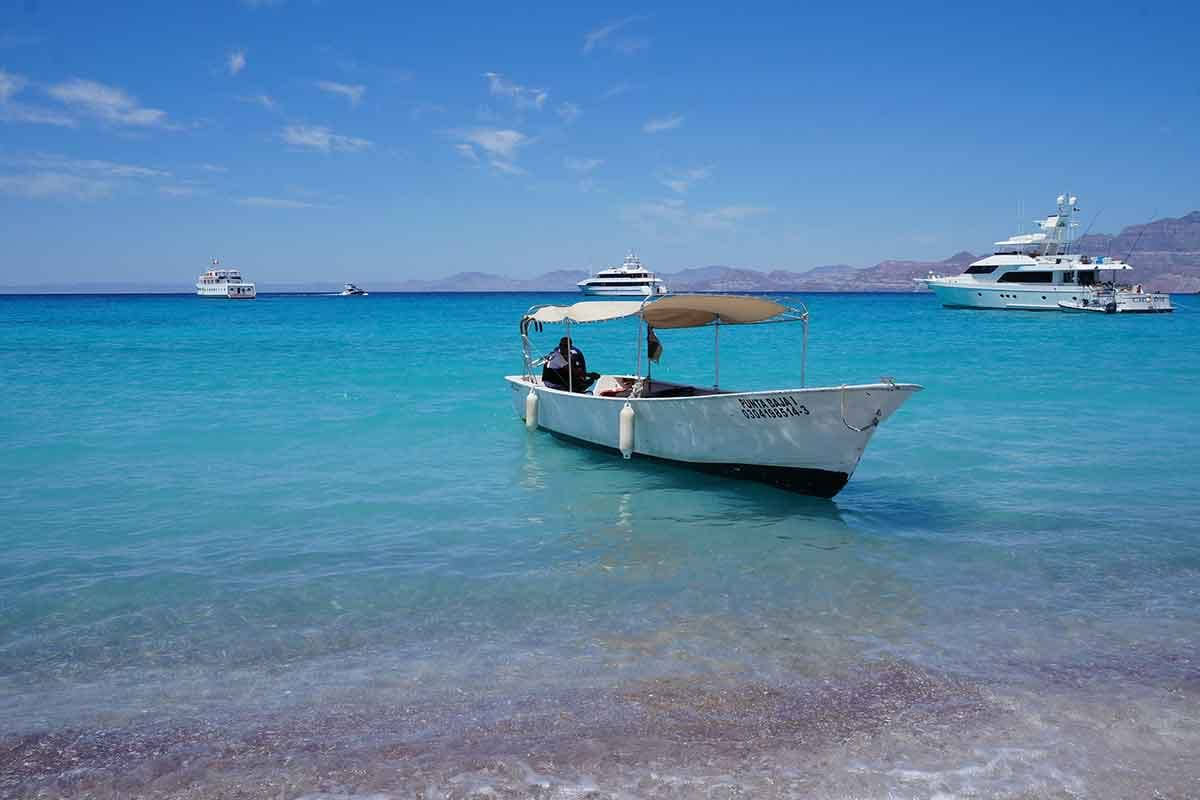
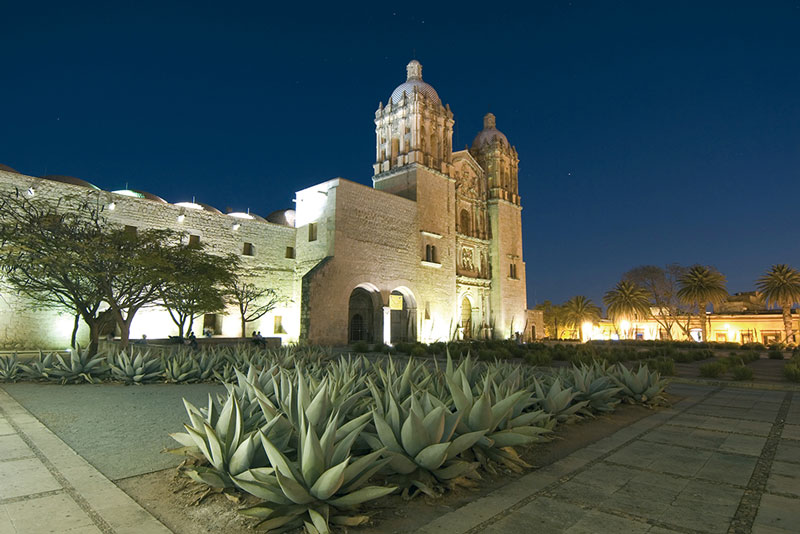
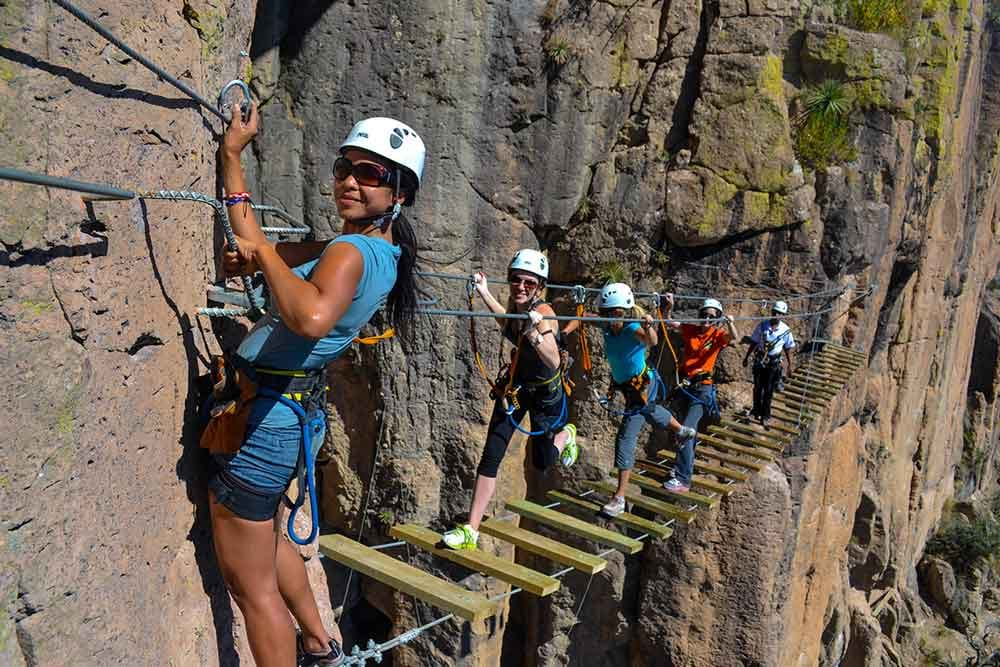
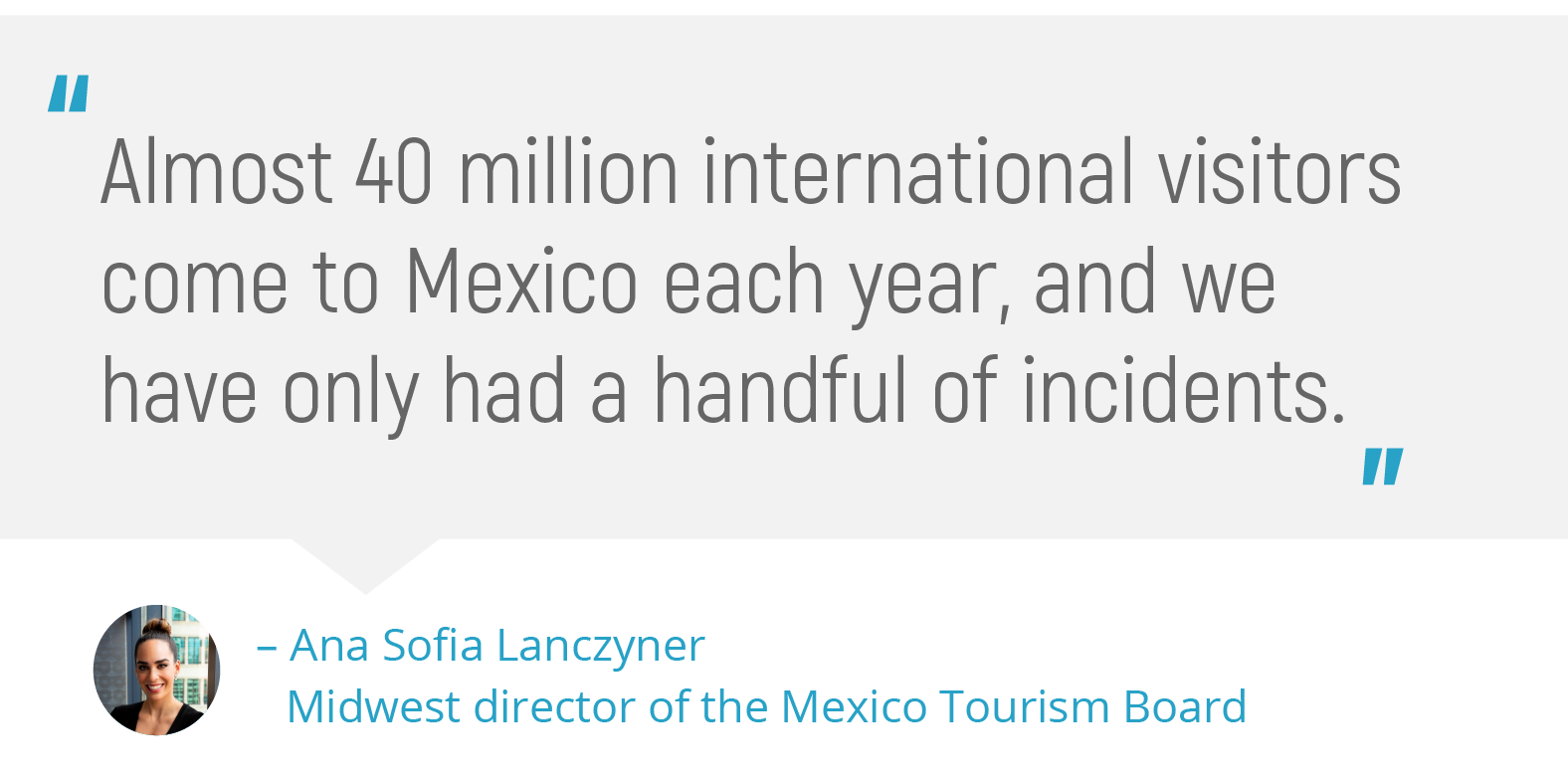
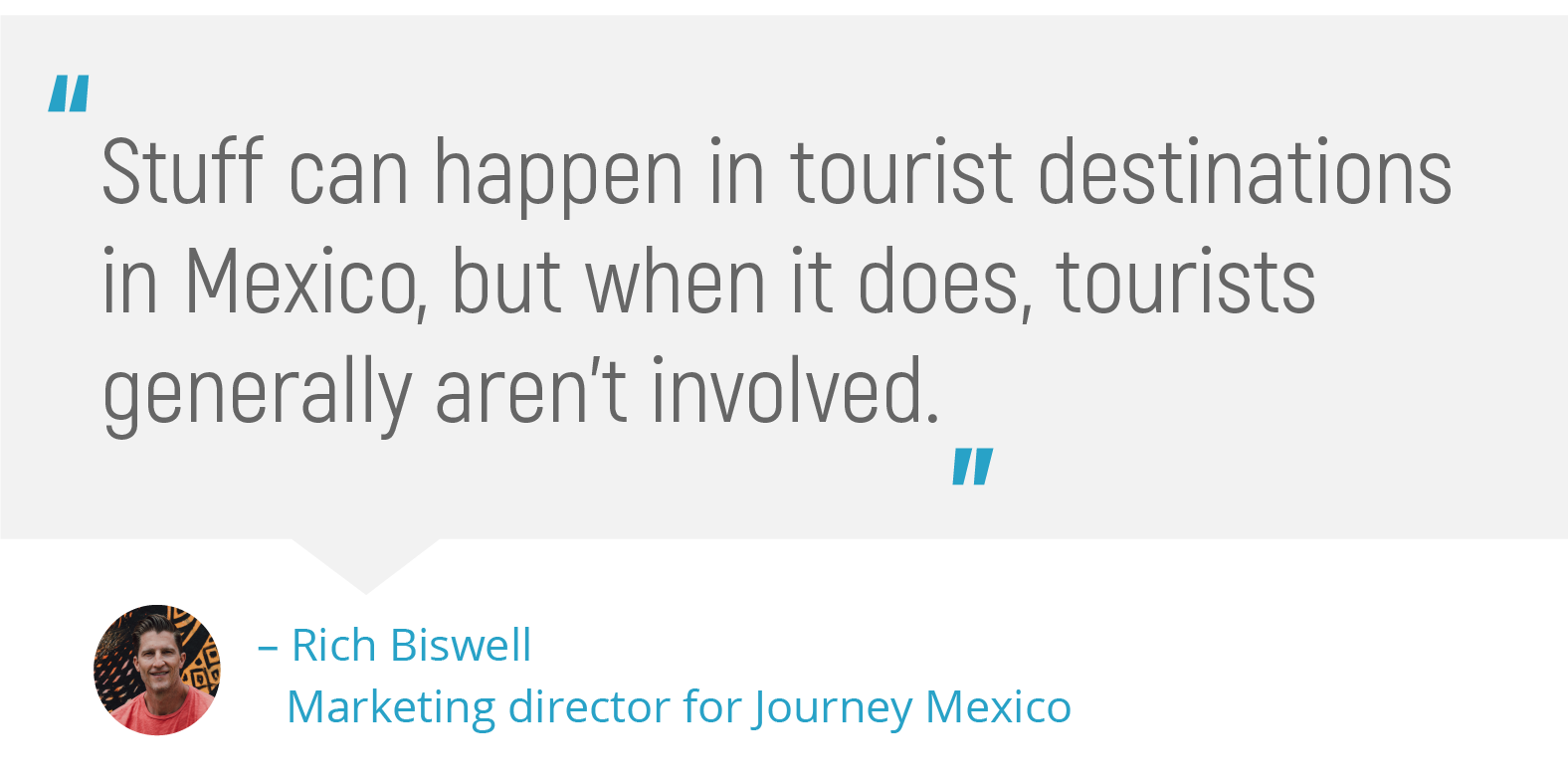

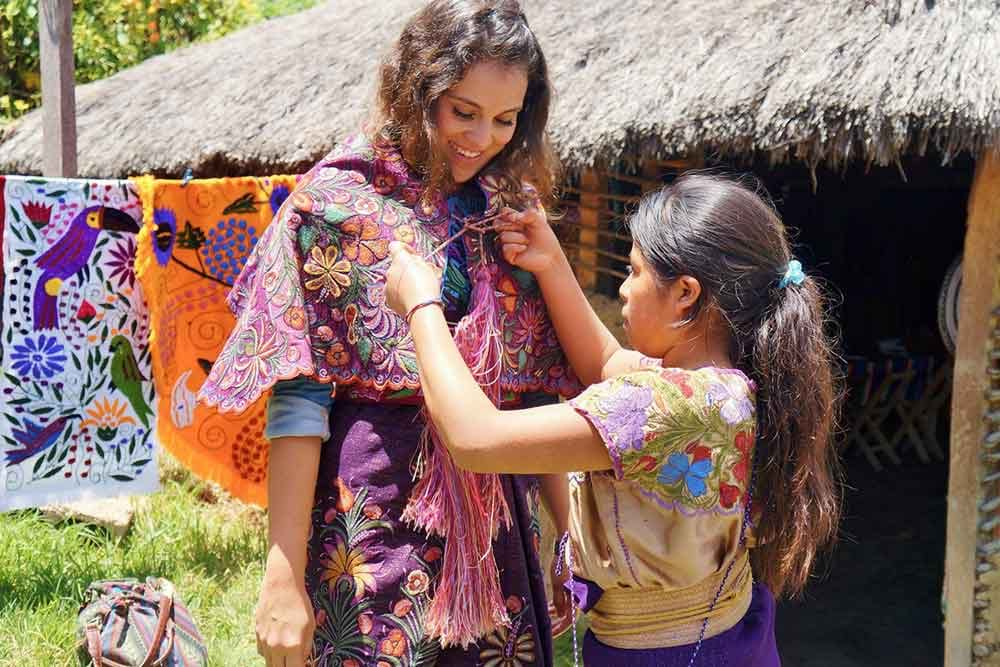
 Tulum, Quintana Roo | Photo credit: Journey Mexico
Tulum, Quintana Roo | Photo credit: Journey Mexico Uxmal, Yucatan | Photo credit: Journey Mexico
Uxmal, Yucatan | Photo credit: Journey Mexico Luxury Casa Koko, Punta Mita | Photo credit: Journey Mexico
Luxury Casa Koko, Punta Mita | Photo credit: Journey Mexico Hacienda, Chekul | Photo credit: Journey Mexico
Hacienda, Chekul | Photo credit: Journey Mexico